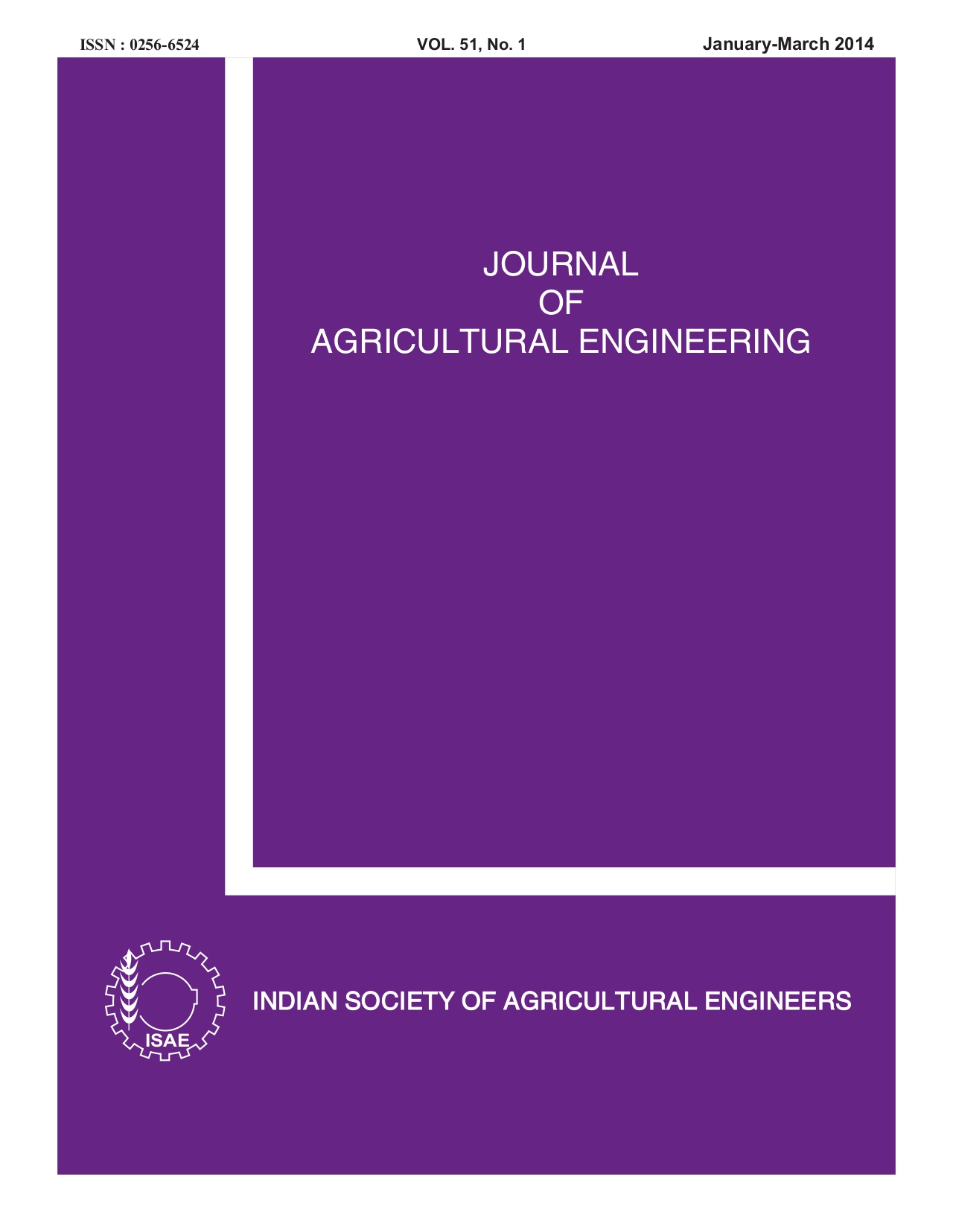Water and Nitrogen Distribution Uniformity for Different Drip-lengths under Drip Irrigation System
DOI:
https://doi.org/10.52151/jae2014511.1542Keywords:
System operating pressure, drip-line length, distribution uniformity, coefficient of variation, urea fertilizerAbstract
A field experiment was conducted at the research farm of Water Technology Centre, Indian Agricultural Research Institute, New Delhi during 2010 to study the effect of different drip-lengths (lateral) (25, 50, 75 and 100 m) and system operating pressures (0.5, 1.0 and 1.5 kg.cm-2) on water and nitrogen distribution uniformity under drip irrigation system. The varying drip lengths and system operating pressures significantly (P<0.01) affected coefficient of variation and distribution uniformity of the drip irrigation system. Highest distribution uniformity for both irrigation water (97.4%) and urea (97.8%) were observed at 1.5 kg.cm-2 operating pressure with 25 m long laterals. The lower values of urea distribution uniformity (93.0%) were recorded at 0.5 kg.cm-2 pressure with 100 m long drip line. Considering the system uniformity coefficient with drip lengths at different system operating pressures and an engineering approach towards the performance of the system for using drip-line, 50 m length was found appropriate for operation at 0.5 kg.cm-2 pressure. However, better performance of the drip up to 100 m lateral length was obtained at pressures of 1 and 1.5 kg.cm-2. Water and fertilizer distribution uniformity decreased with increase in lateral length, while it increased with increase in system operating pressure.
References
Abdallah EL-Amin Badr; Fathi G EL-Ebabi; Eman-Osman-ELtomy. 2006. Fertigation methods effects on water and fertilizer uniformity in drip irrigation. Misr J. Ag. Eng., 23 (1), 122-136.
Assouline S. 2002. The effects of microdrip and conventional drip irrigation on water distribution and uptake. Soil Sci. Soc. Am. J., 66, 1630-1636.
Behrouz Safi Mohamad; Reza Neyshabouri; Amir Hossein Nazemi. 2007. Water application uniformity of a subsurface drip irrigation system at various operating pressures and tape lengths. Turk J Agric For., 31, 275-285.
Coelho E F; Or D. 1999. Root distribution and water uptake patterns of corn under surface and subsurface drip irrigation. Plant and Soil., 206, 123-136.
Jiusheng Li; Yibin Meng; Bei Li. 2007. Field evaluation of fertigation uniformity as affected by injector type and manufacturing variability of emitters. Irrig Sci., 25,117–125.
Kruse E G. 1978. Describing irrigation efficiency anduniformity. J. Irrig. Drain., 104 (IR 1), 34-41.
Kumar Mukesh; Rajput TBS; Patel Neelam. 2012. Effect of system pressure and solute concentration on fertilizer injection rate of a venturi for fertigation. J. Agric. Eng.,49 (40), 9-13.
Onken Arthur B; Sunderman Herbert D. 1977.Colorometeric determinations of exchangeable ammonium, urea, nitrate and nitrite in a single soil extract. Agron. J.,69, 49-53.
Phene C J; Davis K R; Hutmacher R B; Bar-Yosef B;Meek D W; Misaki J. 1991. Effect of high frequency surface and subsurface drip irrigation on root distribution of sweet corn. Irri. Sci., 12, 135-140.
Thabet M; Zayani K. 2008. Wetting patterns under trickle source in a loamy sand soil of South Tunisia. Am. Eurasian Agric. Environ. Sci. J., 3 (1), 38-42.
Wu I P; Howell T A; Hiler E A. 1979. Hydraulic design of drip irrigation systems. Hawaii Agric. Exp. Sta. Tech. Bull. 105., Univ. of Hawaii, Honolulu, Hawaii.
Zur B. 1996. Wetted soil volume as a design objective in trickle irrigation. Irrig. Sci., 16, 101-105.FJ














